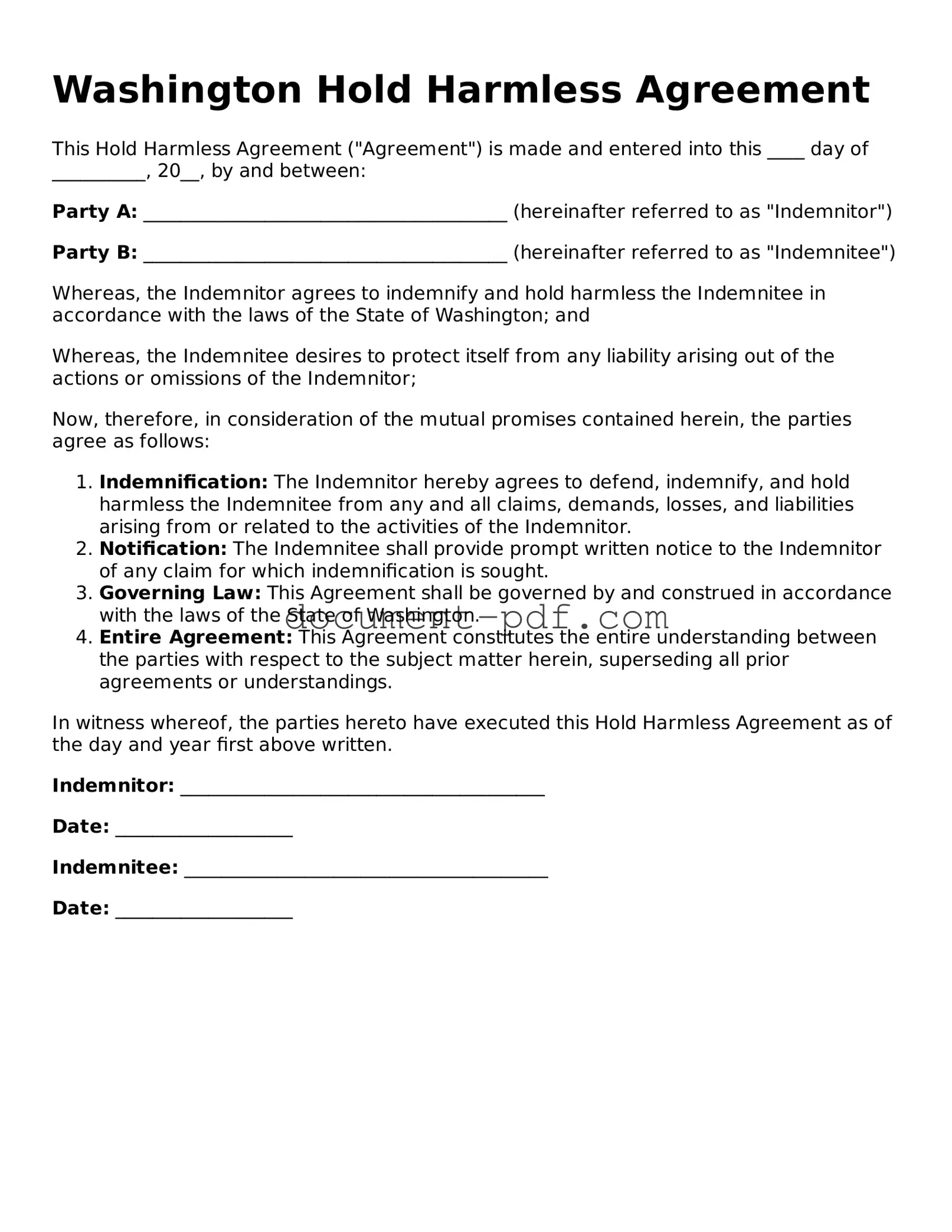Washington Hold Harmless Agreement
This Hold Harmless Agreement ("Agreement") is made and entered into this ____ day of __________, 20__, by and between:
Party A: _______________________________________ (hereinafter referred to as "Indemnitor")
Party B: _______________________________________ (hereinafter referred to as "Indemnitee")
Whereas, the Indemnitor agrees to indemnify and hold harmless the Indemnitee in accordance with the laws of the State of Washington; and
Whereas, the Indemnitee desires to protect itself from any liability arising out of the actions or omissions of the Indemnitor;
Now, therefore, in consideration of the mutual promises contained herein, the parties agree as follows:
- Indemnification: The Indemnitor hereby agrees to defend, indemnify, and hold harmless the Indemnitee from any and all claims, demands, losses, and liabilities arising from or related to the activities of the Indemnitor.
- Notification: The Indemnitee shall provide prompt written notice to the Indemnitor of any claim for which indemnification is sought.
- Governing Law: This Agreement shall be governed by and construed in accordance with the laws of the State of Washington.
- Entire Agreement: This Agreement constitutes the entire understanding between the parties with respect to the subject matter herein, superseding all prior agreements or understandings.
In witness whereof, the parties hereto have executed this Hold Harmless Agreement as of the day and year first above written.
Indemnitor: _______________________________________
Date: ___________________
Indemnitee: _______________________________________
Date: ___________________
